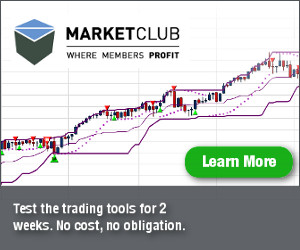Dow sank 251 & closed at the lows, decliners over advancers a relatively mild 2-1 & NAZ dropped 48. The MLP index rose 2+ to the 442s & the REIT index fell 6 to the 347s after its recent run to set a new record high. Junk bond funds eased lower & Treasuries went up. Oil shot up to the 47s (but remains in a bear market) & gold had a good gain.
AMJ (Alerian MLP Index tracking fund)
![Live 24 hours gold chart [Kitco Inc.]](http://www.kitco.com/images/live/gold.gif?0.3651334197674547)

US central bankers risk inflating another asset-price bubble if they keep interest rates too low as unemployment falls, said St. Louis Fed pres James Bullard. He said the “die is already cast” for the jobless rate to drop below the Federal Open Market Committee’s estimate for full employment of 5.2% to 5.5% regardless whether the Fed raises rates. “You are already talking about a policy that is going to be slow moving over the next couple of years, against an economy that is going to run hot,” Bullard added. William Dudley, president of the New York Fed, last year said the economy may need to run “a little hot” to lift inflation back toward the Fed’s 2% goal. Bullard, despite his wariness, said didn’t see any evidence of an obvious bubble at the moment. “I don’t think there’s anything on the scale of the housing bubble or the Internet bubble right now. The only candidate is bonds, government debt and other kinds of debt,” he said. “I’m not counting that, I guess, because that’s us,” he said, referring to the Fed’s own-bond buying campaign that more than quadrupled its balance sheet to $4.5T. The Fed ended purchases in Oct. The last 2 times unemployment dove below estimates of full employment was in the late 1990s & in the mid-2000s. The first occasion became associated with very high valuations in technology stocks, & the 2nd coincided with strongly rising home prices. Both episodes ended with the bubbles bursting & the US economy in recession with the real-estate bust spiraling into a global financial crisis. “The wisdom of going forward here and really pushing hard on this, given the recent history is, I think, one of the elephants in the room about American monetary policy,” he said. Bullard argued for the central bank to raise interest rates from near zero as lower oil prices provide a strong boost to the economy this year.
Amazon.com can still pull out a profit, though CEO Jeff Bezos made no promises that he’ll do it again next qtr. AMZN still ended 2014 with its first annual loss in at least 12 years. Execs said the spending would continue, with plans to keep building data centers for the cloud-computing division & fulfillment centers for faster delivery of goods. For Q1, AMZN forecast an operating loss of $450M to a gain of $50M, which even at the high end is less than the $146M profit from Q1-2014. For Q4, typically the most lucrative because of the holiday shopping season, net income declined 12% from $239M a year earlier while sales rose 15% from $25.6B. Operating expenses climbed 15% to $28.7B, which was a slower rate of increase than the 20% jump a year earlier. Excluding an $895M hit from foreign exchange rates, net sales increased 18% from a year ago & gross margin was 29.5%, up from 26.5%. AMZN also forecast Q1 sales of $20.9-$22.9B, falling short of projection of $23B. The company has long invested heavily to tie people to the e-commerce website. Most recently, it built new warehouses & sorting centers to speed delivery times, unveiled interactive speaker Echo & pushed deeper into corp technology with an e-mail & calendar service for professionals dubbed WorkMail. To help with spending, AMZN obtained a $2B credit line in Sep & last month sold $6B in debt in its biggest bond offering. CFO Tom Szkutak said AMZN will break out the cloud-computing unit, Amazon Web Services, into its own category when it reports results next qtr. The business has traditionally been grouped within the “North America, Other” division. The stock soared over 43 (14%). If you would like to learn more about AMZN, click on this link:
club.ino.com/trend/analysis/stock/AMZN?a_aid=CD3289&a_bid=6ae5b6f7
AMJ (Alerian MLP Index tracking fund)
| CLH15.NYM | ....Crude Oil Mar 15 | ....47.60 | (6.9%) |
![Live 24 hours gold chart [Kitco Inc.]](http://www.kitco.com/images/live/gold.gif?0.3651334197674547)

US central bankers risk inflating another asset-price bubble if they keep interest rates too low as unemployment falls, said St. Louis Fed pres James Bullard. He said the “die is already cast” for the jobless rate to drop below the Federal Open Market Committee’s estimate for full employment of 5.2% to 5.5% regardless whether the Fed raises rates. “You are already talking about a policy that is going to be slow moving over the next couple of years, against an economy that is going to run hot,” Bullard added. William Dudley, president of the New York Fed, last year said the economy may need to run “a little hot” to lift inflation back toward the Fed’s 2% goal. Bullard, despite his wariness, said didn’t see any evidence of an obvious bubble at the moment. “I don’t think there’s anything on the scale of the housing bubble or the Internet bubble right now. The only candidate is bonds, government debt and other kinds of debt,” he said. “I’m not counting that, I guess, because that’s us,” he said, referring to the Fed’s own-bond buying campaign that more than quadrupled its balance sheet to $4.5T. The Fed ended purchases in Oct. The last 2 times unemployment dove below estimates of full employment was in the late 1990s & in the mid-2000s. The first occasion became associated with very high valuations in technology stocks, & the 2nd coincided with strongly rising home prices. Both episodes ended with the bubbles bursting & the US economy in recession with the real-estate bust spiraling into a global financial crisis. “The wisdom of going forward here and really pushing hard on this, given the recent history is, I think, one of the elephants in the room about American monetary policy,” he said. Bullard argued for the central bank to raise interest rates from near zero as lower oil prices provide a strong boost to the economy this year.
Bullard Says Markets Wrong Not to Expect Mid-Year Rate Rise
Amazon.com can still pull out a profit, though CEO Jeff Bezos made no promises that he’ll do it again next qtr. AMZN still ended 2014 with its first annual loss in at least 12 years. Execs said the spending would continue, with plans to keep building data centers for the cloud-computing division & fulfillment centers for faster delivery of goods. For Q1, AMZN forecast an operating loss of $450M to a gain of $50M, which even at the high end is less than the $146M profit from Q1-2014. For Q4, typically the most lucrative because of the holiday shopping season, net income declined 12% from $239M a year earlier while sales rose 15% from $25.6B. Operating expenses climbed 15% to $28.7B, which was a slower rate of increase than the 20% jump a year earlier. Excluding an $895M hit from foreign exchange rates, net sales increased 18% from a year ago & gross margin was 29.5%, up from 26.5%. AMZN also forecast Q1 sales of $20.9-$22.9B, falling short of projection of $23B. The company has long invested heavily to tie people to the e-commerce website. Most recently, it built new warehouses & sorting centers to speed delivery times, unveiled interactive speaker Echo & pushed deeper into corp technology with an e-mail & calendar service for professionals dubbed WorkMail. To help with spending, AMZN obtained a $2B credit line in Sep & last month sold $6B in debt in its biggest bond offering. CFO Tom Szkutak said AMZN will break out the cloud-computing unit, Amazon Web Services, into its own category when it reports results next qtr. The business has traditionally been grouped within the “North America, Other” division. The stock soared over 43 (14%). If you would like to learn more about AMZN, click on this link:
club.ino.com/trend/analysis/stock/AMZN?a_aid=CD3289&a_bid=6ae5b6f7
Amazon.com (AMZN)
US wages & salaries rose at a slower pace in Q4, indicating workers have limited success bargaining for pay increases even as the labor market improves. The 0.5% increase in worker pay followed a 0.8% advance in Q3, according to the Labor Dept. The agency’s employment cost index, which also includes benefits, climbed 0.6% in Q4 from the previous 3 months. Bigger paychecks have eluded American workers even as employers added more positions in 2014 than at any time in the last 15 years. At the same time, with the jobless rate approaching the range Federal Reserve policy makers say is consistent with full employment, companies may soon have to consider higher wages to attract and retain workers. The index measures not only costs of wages & benefits, but also employer-paid taxes such as Social Security & Medicare. Wages of all employees, including gov workers, increased 2.1% from a year earlier, matching the year-over-year rate in Q3. Private wages climbed 0.6% in Q4 from the previous 3 months, when they rose 0.7%. Pay for state & local gov workers advanced 0.4%. Benefit costs for all workers, which include some bonuses, severance pay, health insurance and paid vacations, rose 0.6% for a 2nd straight qtr. Compared with the same 3 months in 2013, benefit expenses were up 2.6%. Company costs for health benefits advanced 2.4% from the same period in the previous year. As of Jan, companies with 100 or more workers must cover 70% of their employees with health care insurance. The mandate won’t apply to small businesses until 2016. The number of available positions at US employers climbed to 4.97M in Nov, the most since 2001. Wages were one disappointing element in an otherwise brightening jobs market last year. Employers added an average 246K workers a month to payrolls, the best performance since 1999. The jobless rate sank to 5.6% in Dec, the lowest since Jun 2008, & close to the 5.2-5.5% that the Fed has defined as full employment.
Worker Pay in U.S. Rose at a Slower Pace in Fourth Quarter
Jan was a very tough month once again. US economic data was fairly favorable but keeps coming in uneven. The housing sector does not show consistent gains as was the case last year. Low priced oil is leaving US families with more spendable money while increases in household income are not showing gains. Overseas markets are highly uncertain with Europe trying to fight off a recession, the MidEast in turmoil & China looking to restart its growth engine. Dow fell more than 600 in Jan as buyers do not find reasons to buy or add to holdings. Feb can be another challenging month for the markets.
Dow Jones Industrials




















